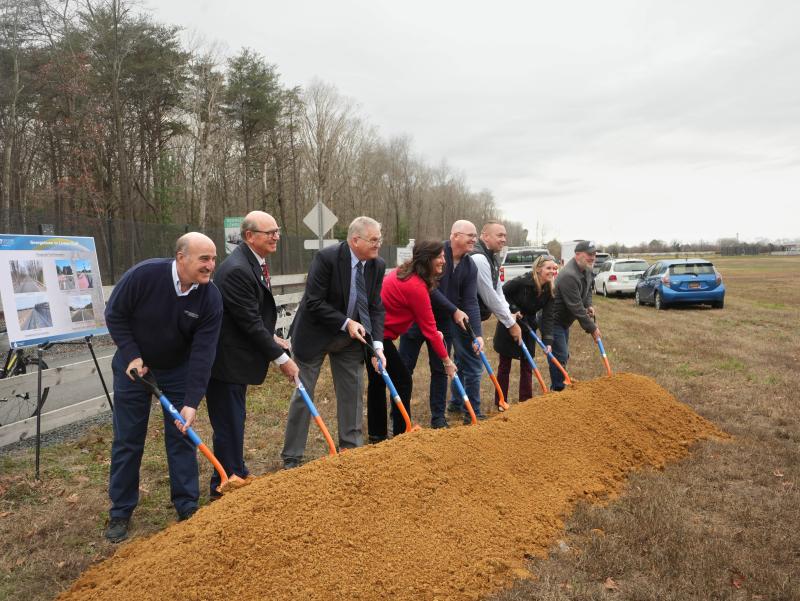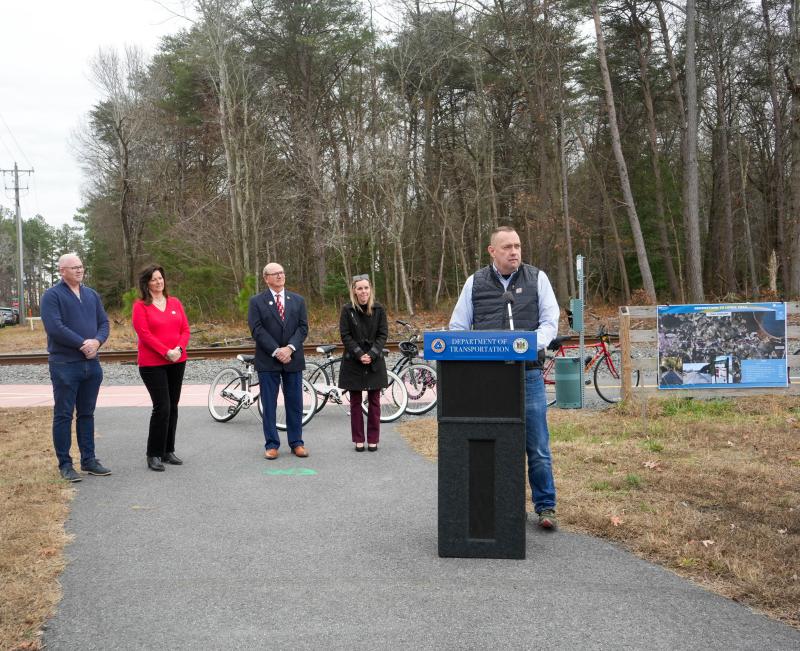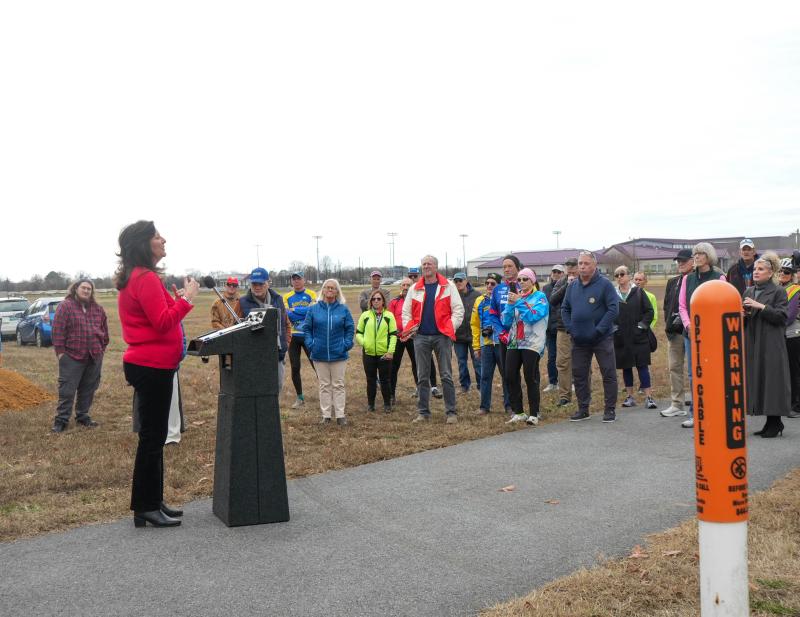Ground broken on final phase of Lewes-to-Georgetown Trail

The Delaware Department of Transportation held a groundbreaking ceremony Dec. 18, to commence its final phase of the Lewes-to-Georgetown Trail, which follows the rail bed of the former Delaware Coast Line Railroad and will span 17 miles when complete.
The final phase, a 6.1-mile portion of 10-foot-wide trail running from Airport Road in Georgetown to Fisher Road near Milton and connecting to the previously constructed sections of the trail, is anticipated to be complete by summer 2026, with the construction process set to begin in late spring of 2025, said DelDOT Secretary Nicole Majeski.
“This trail is going to provide safe access for those that are biking and walking, and having that separation from vehicles, it’s going to save lives,” Majeski said. “We’re really excited that we’re able to do something like this, that’s multimodal, for this investment down here.”
According to Sen. Brian Pettyjohn, R-Georgetown, the feedback from locals, newcomers and visitors about the county’s trail system, and this trail in particular, has been phenomenal.
At this point, DelDOT and Century-Kleinfelder Engineering are working on making the trail, which partially follows an active rail corridor, safe for pedestrians and cyclists, adding signage and warning devices at rail crossings and intersections along the route. They’re also doing some track realignment to minimize impact to existing rail sidings, utility poles and natural resources.
To avoid permanent damage to the wetlands surrounding part of the route, a 1.6-mile stretch of 12-foot-wide elevated boardwalk will be added to the otherwise-asphalt trail.
According to Jeff Niezgoda, contract project manager and assistant director of planning for DelDOT, folks should anticipate very little, if any, traffic delays or disruptions as a result of the construction process, as it’s completely offroad.
As Majeski addressed the ceremony crowd, she mentioned Bill Conway, who helped oversee the project as a senior vice president of Century Engineering before his death in September.
“This is a great testament to [Conway’s] legacy,” Majeski said. “This project will represent everything he stood for.”
“The reason why we’re here today is not a single person or a single group of people,” Pettyjohn added. “It’s been a team effort over the last more than a decade.”






















































